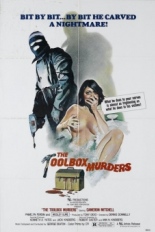
 To be fair, the slasher portions of this infamous slasher film make up only a small part of the picture. It should be called A Criminal Investigation Into the Toolbox Murders. Regardless, The Toolbox Murders is one of those movies I was too young to watch at the time it hit VHS, only able to read and hear about it being one of the most vile things ever committed to celluloid. Not sure if this says something about hype or me, but really, now that I’ve seen it, I found the movie fairly tame.
To be fair, the slasher portions of this infamous slasher film make up only a small part of the picture. It should be called A Criminal Investigation Into the Toolbox Murders. Regardless, The Toolbox Murders is one of those movies I was too young to watch at the time it hit VHS, only able to read and hear about it being one of the most vile things ever committed to celluloid. Not sure if this says something about hype or me, but really, now that I’ve seen it, I found the movie fairly tame.
Don’t worry, though: Bloody murders using tools do occur. They all go down at an apartment complex that, conveniently, is the kind where lovely ladies undulate in their underthings at night in front of open windows, as if inviting pervo-psycho killers with a True Value rewards card. The most infamous moment involves porn star Marianne Walter (Screw My Wife Please 44: She Needs Your Meat) being nail-gunned after masturbating in the tub. It happens.
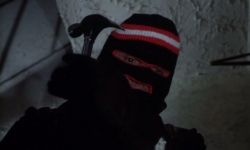 After the ski-masked killer’s rounds of chiseling and hammering tenants, one right after the other, The Toolbox Murders switches into a police procedural, à la Law & Order: Hardware Victims Unit, as the cops investigate. Unlike Tobe Hooper’s superior 2004 remake, the movie then hits some serious drag. Had it spaced the crimes out, one’s attention would be better held.
After the ski-masked killer’s rounds of chiseling and hammering tenants, one right after the other, The Toolbox Murders switches into a police procedural, à la Law & Order: Hardware Victims Unit, as the cops investigate. Unlike Tobe Hooper’s superior 2004 remake, the movie then hits some serious drag. Had it spaced the crimes out, one’s attention would be better held.
Still, it’s The Toolbox Murders. When something with such a demented concept enjoys cultural impact decades later, it’d be a shame not to embrace it at least a little bit. It’s almost worth watching just to see Wesley Uhre, simultaneously breaking out of his Land of the Lost typecasting and smothering his career. It’s definitely worth watching just to see Cameron Mitchell, being Cameron Mitchell. —Rod Lott

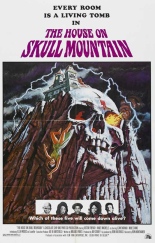
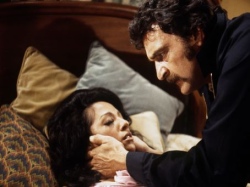 Phillipe is a creepy fool who drunkenly hits on Cousin Lorena; Harriet is a timid housemaid who sees visions of death. Lorena and Andrew quickly form a relationship that may or may not be romantic (I choose “not,” because it allows me to continue judging Phillipe while still liking the two leads), giving this House some appeal that it probably doesn’t deserve. There’s nothing overtly sexual in the way they act around each other; they’re just extremely comfortable in one another’s company and encourage each other in more ways than simply trying to stay alive. There’s a particularly sweet scene where Andrew complains about not knowing anything about himself: “I don’t even know what color I am.”
Phillipe is a creepy fool who drunkenly hits on Cousin Lorena; Harriet is a timid housemaid who sees visions of death. Lorena and Andrew quickly form a relationship that may or may not be romantic (I choose “not,” because it allows me to continue judging Phillipe while still liking the two leads), giving this House some appeal that it probably doesn’t deserve. There’s nothing overtly sexual in the way they act around each other; they’re just extremely comfortable in one another’s company and encourage each other in more ways than simply trying to stay alive. There’s a particularly sweet scene where Andrew complains about not knowing anything about himself: “I don’t even know what color I am.”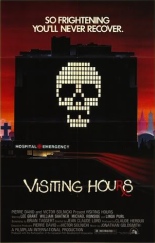
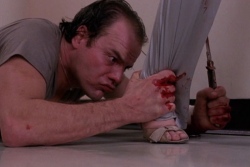 The film stars Michael Ironside as a misogynist maniac on a mission to kill the popular female broadcaster (Lee Grant) who has taken on the cause of a battered woman unjustly convicted of murdering her abusive husband. When his initial attack on her is thwarted, he returns to the hospital to finish the job, but only manages to kill a bunch of other people before she is able to use his own knife to end his deadly spree.
The film stars Michael Ironside as a misogynist maniac on a mission to kill the popular female broadcaster (Lee Grant) who has taken on the cause of a battered woman unjustly convicted of murdering her abusive husband. When his initial attack on her is thwarted, he returns to the hospital to finish the job, but only manages to kill a bunch of other people before she is able to use his own knife to end his deadly spree.
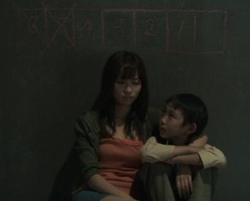 “So Far” is a quasi-ghost story that goes on too long, with a twist that mitigates any power. It examines what happens when an only child’s parents are killed in a car crash, but return as ghosts, only unable to be seen or heard by the other spouse. “The Poem of Collected Sunlight” stands out, but only because it’s animated. The two-character bit is like the Frankenstein myth rendered as a tonal piece.
“So Far” is a quasi-ghost story that goes on too long, with a twist that mitigates any power. It examines what happens when an only child’s parents are killed in a car crash, but return as ghosts, only unable to be seen or heard by the other spouse. “The Poem of Collected Sunlight” stands out, but only because it’s animated. The two-character bit is like the Frankenstein myth rendered as a tonal piece. 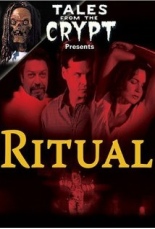
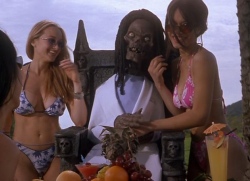 Her employer, Craig Sheffer, explains his crazy brother (Daniel Lapaine) believes he’s a zombie. With so much voodoo afoot, lots of hallucinations are experienced in this ridiculously routine shocker: crawling spiders, moving trees, crashing ceiling, Medusa hair and so on. Holy shit, does Grey sure scream a lot. But she has no Principal Rooney to kick in the face immediately thereafter, which makes a huge difference.
Her employer, Craig Sheffer, explains his crazy brother (Daniel Lapaine) believes he’s a zombie. With so much voodoo afoot, lots of hallucinations are experienced in this ridiculously routine shocker: crawling spiders, moving trees, crashing ceiling, Medusa hair and so on. Holy shit, does Grey sure scream a lot. But she has no Principal Rooney to kick in the face immediately thereafter, which makes a huge difference.